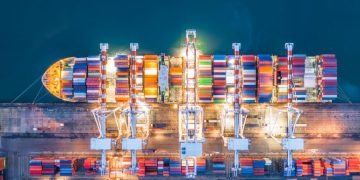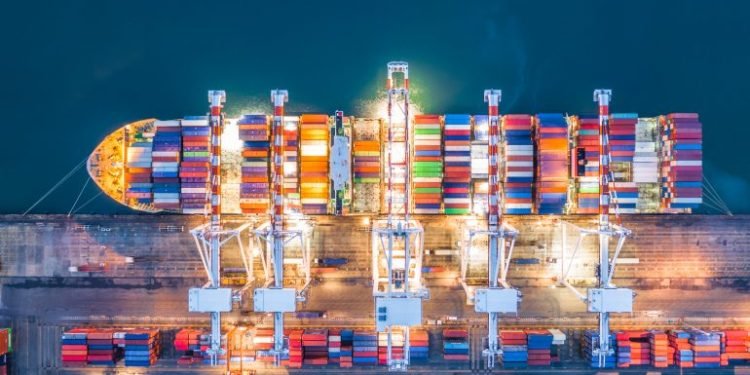By Eva Richardson | The Logistic News
April 11, 2025
In a sweeping move with major implications for U.S. trade and industrial supply chains, President Donald J. Trump has signed a new executive order aimed at reviving America’s maritime industry. The directive—dubbed the Maritime Action Plan (MAP)—is poised to rewire the infrastructure, strategy, and sourcing practices of the nation’s chemical logistics network and beyond.
Signed on April 9, 2025, the order outlines a multi-agency mission to rebuild domestic shipbuilding capabilities, modernize U.S. ports, and reduce dependency on Chinese-built ships and port technologies. The plan also seeks to establish a stronger U.S.-flagged commercial fleet, a move experts say could redefine how key sectors—particularly the chemical and petrochemical industries—move product across oceans.
Maritime Muscle as a National Imperative
The MAP reflects a growing consensus in Washington that control over logistics infrastructure is now a national security concern. Chemical manufacturers, which rely heavily on maritime imports of raw materials and exports of finished goods, are among the first industries bracing for disruption—and opportunity.
“This order signals a fundamental shift in how the U.S. approaches industrial logistics,” said Tara Linwood, senior analyst at SupplyStrategies. “It’s about sovereignty, but also supply chain autonomy—and that’s going to shake things up, especially for sectors like chemicals that are deeply globalized.”
What the Executive Order Means in Practice
According to the White House and Department of Transportation, the MAP includes:
-
Massive investment in U.S. shipyards to rebuild commercial shipbuilding capacity.
-
Port security upgrades to phase out foreign-made surveillance and container scanning equipment.
-
Incentives for private companies to register commercial vessels under the U.S. flag.
-
Policy reviews across federal agencies to identify dependencies on non-allied maritime assets.
The chemical industry could see a range of consequences—from increased shipping costs to tighter procurement timelines—as shipping lines and port operators pivot to meet new compliance and infrastructure standards.
Disruption or Resilience? The Chemical Sector’s Fork in the Road
For U.S.-based chemical firms, which move vast quantities of polymers, fertilizers, industrial gases, and specialty materials via bulk carriers, the stakes are high. The majority of this transport relies on a global fleet of foreign-built and often foreign-operated vessels, many originating from or transiting through Chinese-controlled ports.
“Short term, there’s no doubt this order will create friction,” noted Edward Cortez, Director of Logistics at a Gulf Coast-based chemical company. “But if it accelerates port modernization and provides more secure U.S.-flagged routes in the long run, that could be a net positive—especially when you look at the disruptions we’ve endured since 2020.”
Opportunities for Domestic Infrastructure and Jobs
The MAP is also being framed as a jobs and industrial investment initiative. U.S. shipyards—many of which have been operating at reduced capacity for years—may benefit from a surge of public-private investment. If implemented effectively, this could also ease pressure on overburdened supply chains by reducing lead times and increasing fleet flexibility.
In parallel, chemical shippers are expected to explore multi-modal logistics strategies, greater reliance on coastal feeder services, and increased inventory stockpiling near U.S. ports to offset transitional bottlenecks.
Global Implications: Realignment or Retaliation?
While the U.S. positions this policy as pro-sovereignty, foreign governments—particularly China—may view it as a direct challenge to global maritime trade norms. Analysts are watching closely for signs of retaliatory tariffs or new restrictions affecting trans-Pacific container and bulk cargo flows.
At the same time, logistics providers are eyeing potential regional shifts. Ports in Mexico, Canada, and South America may see a rise in volume if U.S. trade lanes are temporarily constrained or reprioritized during the MAP rollout.
What’s Next?
Federal agencies have 90 days to present detailed implementation frameworks. Meanwhile, stakeholders across shipping, port operations, and the chemicals industry are mobilizing to understand what compliance will entail—and how to turn uncertainty into long-term strategic advantage.
Eva Richardson is a senior correspondent at The Logistic News, covering transportation policy, energy logistics, and infrastructure transformation in North America.























